Before the outbreak of WWII, Wehrmacht regulations stipulated that each soldier’s uniform and equipment items were to be marked with a tag with his name, and a stamp for his unit. Here is a scan from a Wehrmacht manual that showed where these stamps and labels were to be placed in the various items a soldier was issued.

Here is the interior of an early M34 field cap:

This cap follows the regulations exactly. Note that at some point the soldier was transferred and the unit stamp inked out with a new unit stamped in. There is no unit designation on the name tag, this would have been redundant as that information was on the ink stamp. Here is another original pre-war name tag of the same type.

Some of the name tags used before the war also did have ranks and unit designations. Here is one on a Reichsarbeitsdienst Zeltbahn. Various typefaces were used on these tags.

The use of the name tags and stamps was not the easiest or simplest way to mark gear, it was also not the most permanent way as the tags could be removed/replaced, but it was the prewar German regulation way. Wehrmacht units were in charge of stamping the gear with the unit designation and we can assume that the tags were supplied by the units to the soldiers, or at least the tags were made easily available for them to buy. All this changed in 1940 with the following regulation:
“Allegemeine Heeresmitteilungen, Marz 1940
- Namenszettel
Waehrend des Krieges kommt das anbringen von Namenszettel as Stoff bzw Papier in die Bekleidungs und Ausrusestungsstuecke des Mannes (H. Dv. 121 Nr. 142) in Fortfall. Vorhandene sowie bereits bestellte Namenszettel koennen aufgebraucht werden.”
Translation: During the war the use of name tags made of cloth or paper in clothing and equipment of the men (as stated in previous regulation) is discontinued. Existing tags and those already ordered can be used.
Use of clothing labels was not a totally private and optional endeavor before the war, it was by regulation. When a new regulation stated that these tags were to be discontinued, it seems reasonable to assume that they were no longer supplied to soldiers by their units. This is presumably why the majority of surviving wartime issue uniform and equipment items do not have these name labels. Most surviving labels of this style are on pre-war items, though even some late war items can be seen with these; I regard it as probable that the tags were still made available for soldiers (or anyone else) to purchase. Despite the official discontinuation of these name tags, many soldiers did still feel a need to identify personal property and kit items. Here are original wartime field gear items that are marked in various ways. Many wartime items remained in use after May 1945, in POW camps and later, in civilian use, in some cases for decades; there is no doubt that some original Wehrmacht field gear items are out there in use to this day. It may be impossible to look at a wartime object and know when exactly a personal marking was applied, and it can be hard to find wartime photos showing a level of detail that would show if equipment items had small personal markings. For this article, I have chosen what I regard as typical examples that I regard as plausible for having been wartime done.
-Stitching name or initials into fabric, as seen on this gas mask strap:

-Use of simple typed glued-on name labels in place of printed tags, here on a gas mask canister:
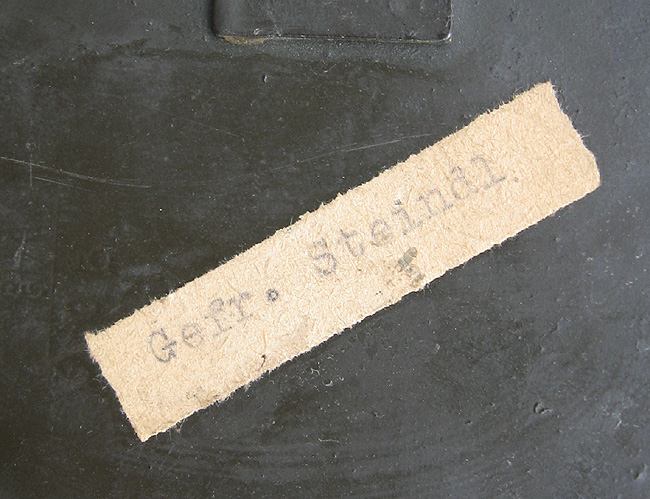
-Writing a name on the item in ink, probably most common way for cloth items; here on a Rucksack, a Tornister, and a canteen cover:
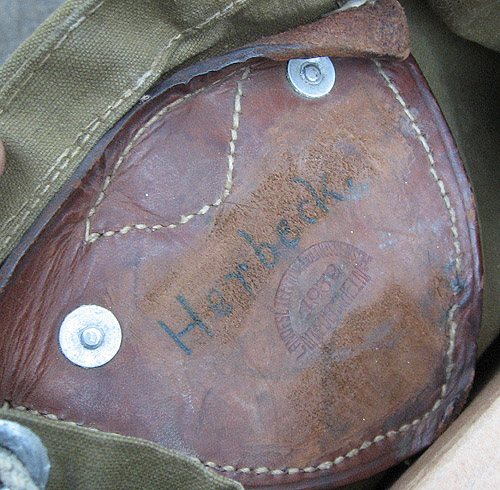


-Scratching a name into a metal item, shown here on a belt buckle and a mess tin:
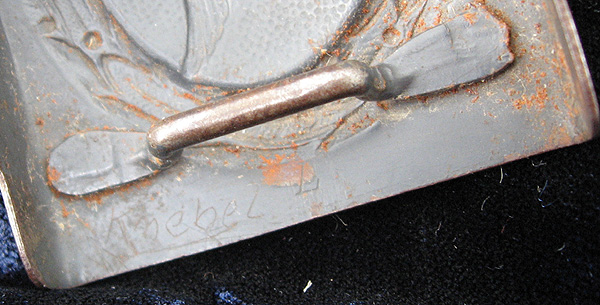

-Scratching or writing initials, a monogram, or identifying symbol of some kind. Here are a couple of canteens with marks on the leather straps, a Zeltbahn with an ink marking, and a mess kit:



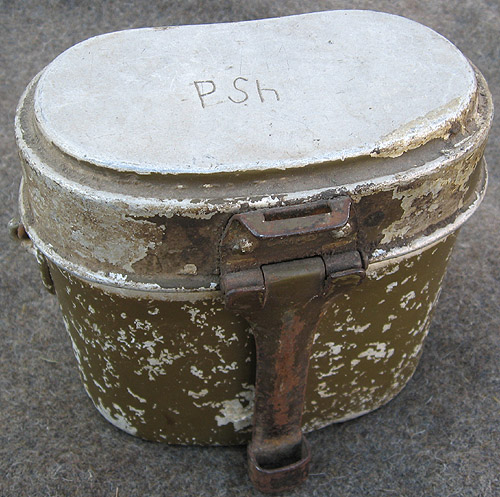
Note that none of these examples have any kind of unit designation, divisional symbol or other identifier. Only rarely would a soldier have also added his unit. In such cases the Kompanie was specified, not the Division. A typical way would be the soldier’s name and the number of the Kompanie, as on this 1943 Tornister:
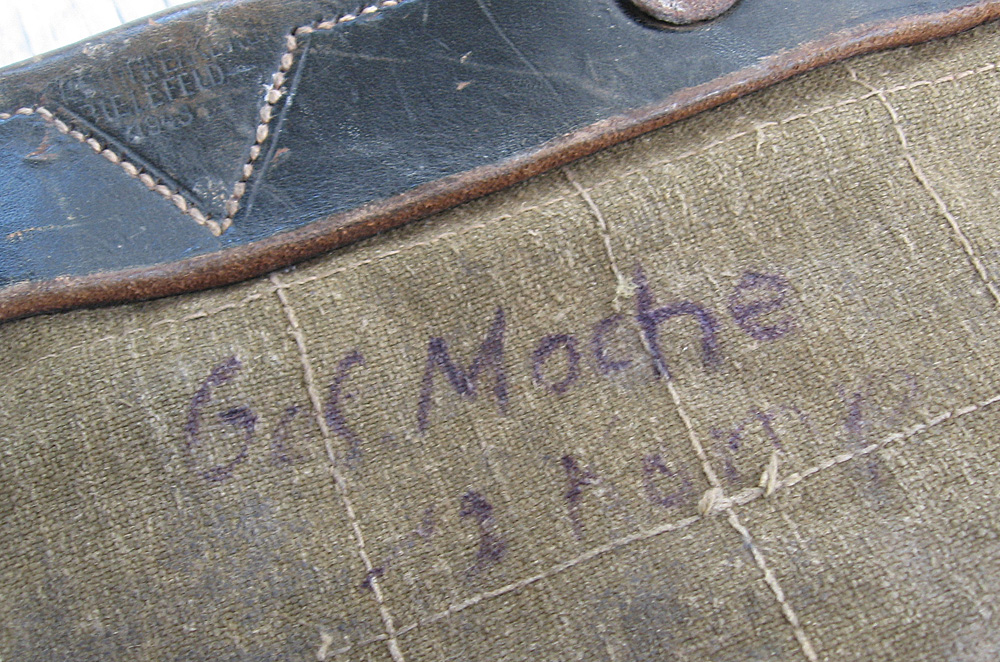
In some cases the Feldpost number of the soldier’s unit might be used, as on this late-war Tornister:
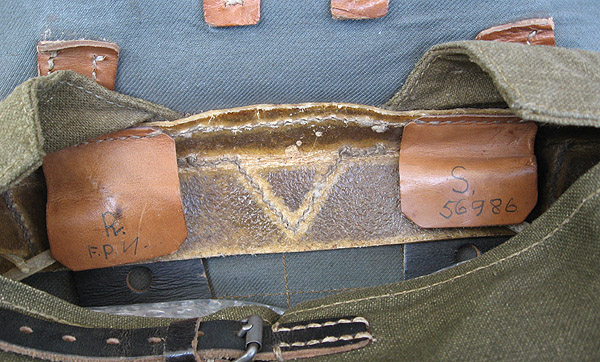
This large Rucksack and captured Soviet map case were also marked with names and Feldpost numbers:


There were also private purchase civilian type identifying items that soldiers could have bought and used as well to mark kit. Here are metal initials on a tailor made officer’s M38 cap, and a woven initial sewn on issue underclothing.


It should also be pointed out that many or most wartime Wehrmacht equipment items were not named at all. Issue items were Reich property, not owned by the soldier; he was responsible for them, but to a soldier, one canteen or mess kit might have been indistinguishable from another.